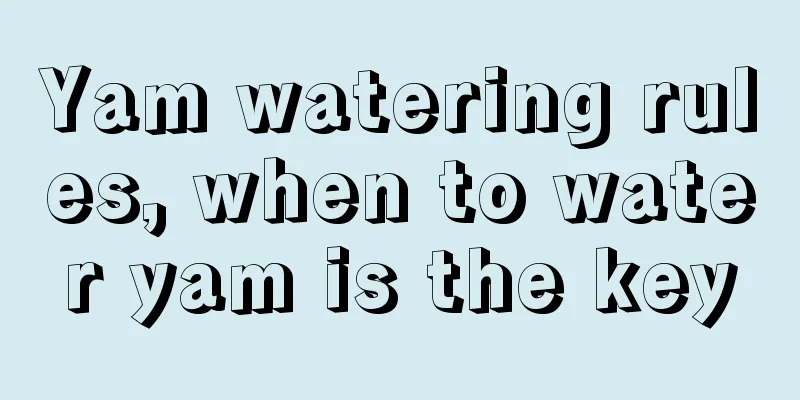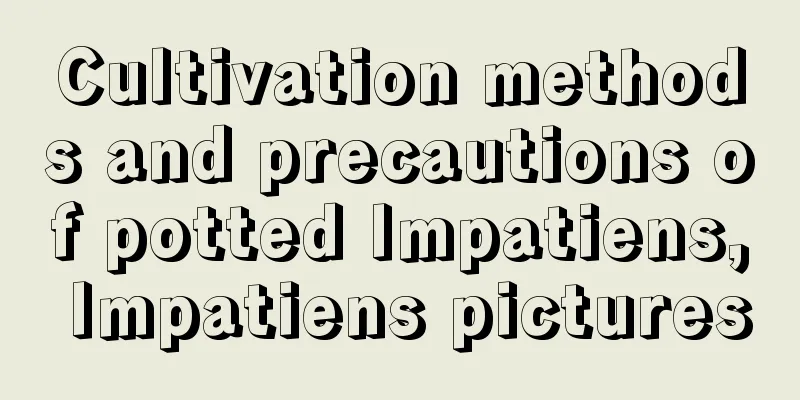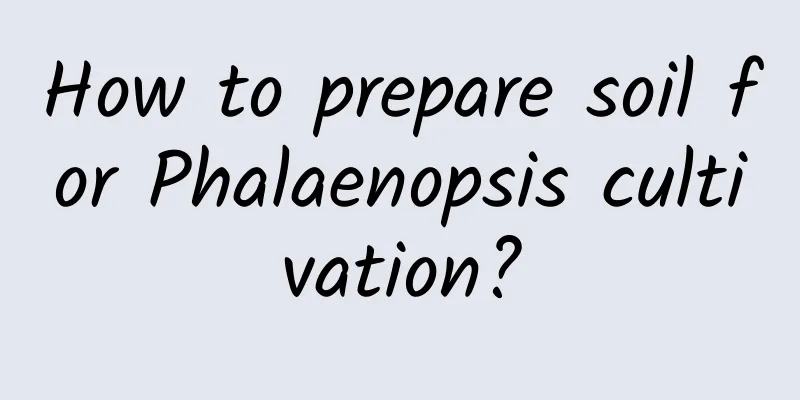Yam watering rules, when to water yam is the key

1. Watering rules1. Don’t water unless the soil is dry: Yam is a plant that has a certain degree of drought resistance and is a tuber. Once the environment is too humid, it will easily affect its breathing and is not conducive to the growth of the plant. For potted plants, be sure to water them after the soil is dry. Each time you water, you must water thoroughly. This way, alternating between dry and wet will be more conducive to the plant's absorption of water. 2. Shallow watering to prevent waterlogging: For yam planted in the ground, the soil is not so easy to dry out, so the frequency of watering does not need to be too high. In the early stage, there is no need to water as long as the topsoil is moist below 5 cm. Wait until the plant grows to 1 meter high for the first watering, and the second watering after 20 days. These two waterings should be shallow, and not flooding with large amounts of water. When the tubers are in the swelling stage, if the soil is dry, it needs to be watered thoroughly. In addition, in autumn, attention should be paid to drainage to avoid waterlogging. 2. Watering timeThe best time to water yam is in the morning or evening, and be sure to avoid watering at noon. Because the light is strong and the temperature is relatively high at noon, water is easily lost after watering, making it unable to absorb enough water. In addition, there is no need to water during the rainy season. The environment is relatively humid, and water is easily accumulated after watering, affecting the breathing of the roots. 3. NotesYam itself does not require much water. If you water it too much, it will affect the growth of the plant. Especially if there is waterlogging in the pot soil, it will affect the breathing of the roots and may cause them to rot over time. To prevent root rot caused by overwatering, the first thing to do is to drain the water and increase air circulation to allow the water to evaporate as quickly as possible. If the situation does not improve, it needs to be removed from the pot, the rotten roots need to be properly trimmed, and then replanted. |
<<: Can orchids use bean cake fertilizer? How to apply cake fertilizer to orchids
>>: What fertilizer should be used to grow yam? What fertilizer is best for growing yam?
Recommend
Rose cuttings
1. Cutting time It is recommended to carry out ro...
Do tulips prefer shade or sun?
Do tulips prefer shade or sun? Tulip is a sun-lov...
How to make mimosa grow lushly and how to trim it if it grows too tall
1. How to grow lush 1. Environmental temperature:...
How many years does it take for trumpet creeper to bloom?
1. How many years does it take to bloom? If you p...
How to divide the Phoenix bamboo into pots so that it can survive easily
When is the best time to divide the Phoenix bambo...
Can the green treasure tree be watered with beer?
Can the green treasure tree be watered with beer ...
Techniques for hydroponics of white-stalked spatholobus
Growth habit It tolerates partial shade and avoid...
What flowers are suitable for growing in Harbin? What are the city flowers and trees?
1. Harbin's Climate Characteristics Harbin ha...
The flower language and cultural meaning of blue mustard
The flower language of blue mustard The flower la...
Do I need to wash the roots of the succulents I bought from Taobao?
1. Do I need to wash my roots? Although many peop...
Can honeysuckle be planted in the yard?
Can honeysuckle be planted in the yard? Honeysuck...
How long is the growing cycle of cauliflower?
Cauliflower growth cycle The growth cycle of caul...
A complete guide to breeding methods and precautions for smooth sailing
1. Breeding methods 1. Sunlight: It is relatively...
Spring maintenance methods for Clivia
Leave the room at the right time In winter, Clivi...
How to grow kiwi fruit
1. Planting time The planting time for kiwifruit ...









